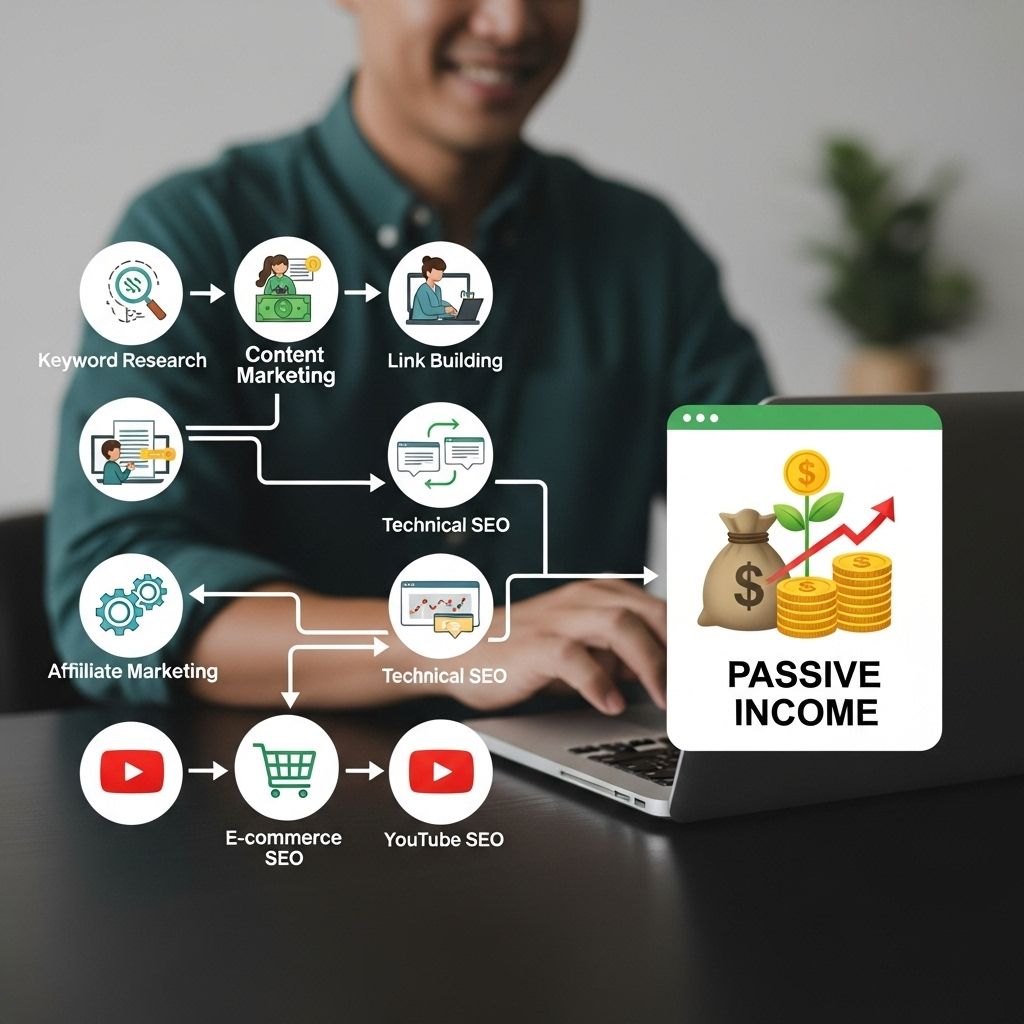In today’s digital landscape, generating passive income is a goal for many aspiring entrepreneurs and seasoned professionals alike. With the right strategies in place, individuals can leverage their skills to create a steady stream of income with minimal ongoing effort. Among the various methods to achieve this, Search Engine Optimization (SEO) stands out as a powerful tool. By optimizing web content, businesses can attract organic traffic, build authority, and ultimately increase revenue. This article delves into effective SEO strategies that can be harnessed to generate passive income.
Understanding Passive Income and SEO
Passive income refers to earnings derived from investments where the individual is not actively involved in the day-to-day operations. This can come from various sources, such as:
- Affiliate marketing
- Online courses
- Blogging
- Digital products
- YouTube channels
SEO plays a critical role in enhancing the visibility of these income streams. By optimizing content for search engines, you can attract more visitors, which translates to more sales or leads. The relationship between SEO and passive income can be summarized as follows:
- Higher organic traffic leads to increased revenue opportunities.
- Quality content establishes authority, which builds trust with your audience.
- Improved search rankings increase the likelihood of conversions.
Keyword Research: The Foundation of SEO
The first step in any SEO strategy is comprehensive keyword research. This process involves identifying the terms and phrases that your target audience is searching for. Effective keyword research helps in crafting content that meets user intent. Here are steps to conduct thorough keyword research:
1. Identify Your Niche
Understand the topics and themes relevant to your passive income streams. This helps in narrowing down potential keywords.
2. Use Keyword Research Tools
Popular tools include:
- Google Keyword Planner
- Ahrefs
- SEMrush
- Ubersuggest
3. Analyze Competitors
Review competitors’ websites to identify keywords that drive their traffic. This can reveal content gaps you can exploit.
4. Long-Tail Keywords
Focus on long-tail keywords, which are typically less competitive and more targeted. These phrases usually have lower search volume but higher conversion rates.
Content Creation: Quality is Key
Once you have identified relevant keywords, the next step is to create high-quality content that resonates with your audience. Quality content is not only favored by search engines but also engages readers effectively. Here’s how to create compelling content:
1. Create Evergreen Content
Evergreen content remains relevant over time and continues to attract visitors. Examples include:
- How-to guides
- Tutorials
- Product reviews
2. Optimize On-Page SEO
Ensure that each piece of content is optimized for search engines. This includes:
- Using the target keyword in the title, headers, and throughout the content.
- Including meta descriptions and alt tags for images.
- Utilizing internal and external links.
3. Use Visuals
Incorporating images, infographics, and videos can enhance user experience and keep visitors engaged longer.
Building Backlinks: Authority and Credibility
Backlinks are links from other websites to your content. They serve as a vote of confidence, signaling to search engines that your content is credible and valuable. Strategies to build backlinks include:
1. Guest Blogging
Write articles for reputable sites in your niche. This not only exposes your content to a new audience but also allows you to include links back to your site.
2. Outreach
Reach out to influencers and bloggers in your field to collaborate on content that can include backlinks.
3. Create Shareable Content
Infographics, reports, and comprehensive guides tend to attract links naturally as others reference them.
Monitoring and Analyzing Performance
To ensure that your SEO strategies are effective, regularly monitoring performance is crucial. Tools and methods to analyze your SEO performance include:
1. Google Analytics
Track user behavior, traffic sources, and conversion rates. Understanding how visitors interact with your site can inform future strategies.
2. Google Search Console
Monitor search performance, indexing status, and potential issues affecting your site’s visibility.
3. SEO Audits
Conduct regular SEO audits to identify areas for improvement, including website speed, mobile performance, and SEO best practices.
Leveraging Social Media
While social media signals may not directly influence SEO rankings, they play a crucial role in driving traffic to your content. Here are some strategies to leverage social media:
1. Share Your Content
Promote your blog posts, videos, and products across social media platforms to increase visibility and drive traffic.
2. Engage with Your Audience
Respond to comments and messages to build a community around your brand. Engaged audiences are more likely to share your content.
3. Utilize Paid Advertising
Consider using paid ads to boost exposure for your high-converting content, especially when launching new products or services.
Final Thoughts
Implementing effective SEO strategies can pave the way for significant passive income. By focusing on keyword research, creating valuable content, building backlinks, and leveraging analytics, you can develop a sustainable online presence that attracts organic traffic. As the digital landscape evolves, staying informed about SEO best practices is essential to maintaining and growing your passive income streams.
FAQ
What are the best SEO strategies for generating passive income?
The best SEO strategies for generating passive income include keyword research, optimizing on-page elements, creating high-quality content, building backlinks, and utilizing social media for promotion.
How can keyword research enhance my passive income potential?
Keyword research helps you identify profitable niches and relevant topics that your target audience is searching for, which can lead to higher organic traffic and increased revenue.
What role does content quality play in SEO for passive income?
High-quality content is essential for SEO as it attracts visitors, encourages sharing, and keeps readers engaged, all of which can boost your site’s rankings and passive income opportunities.
How can backlinks improve my site’s SEO for passive income?
Backlinks from reputable sites enhance your site’s authority and credibility, which can lead to higher search engine rankings and increased organic traffic, ultimately contributing to passive income.
Is social media important for SEO and passive income?
Yes, social media can drive traffic to your site and increase visibility, which can indirectly improve your SEO rankings and enhance your potential for passive income.
What are some common mistakes to avoid in SEO for passive income?
Common mistakes include neglecting mobile optimization, overstuffing keywords, ignoring analytics, and failing to update old content, all of which can hinder your SEO efforts and passive income.




